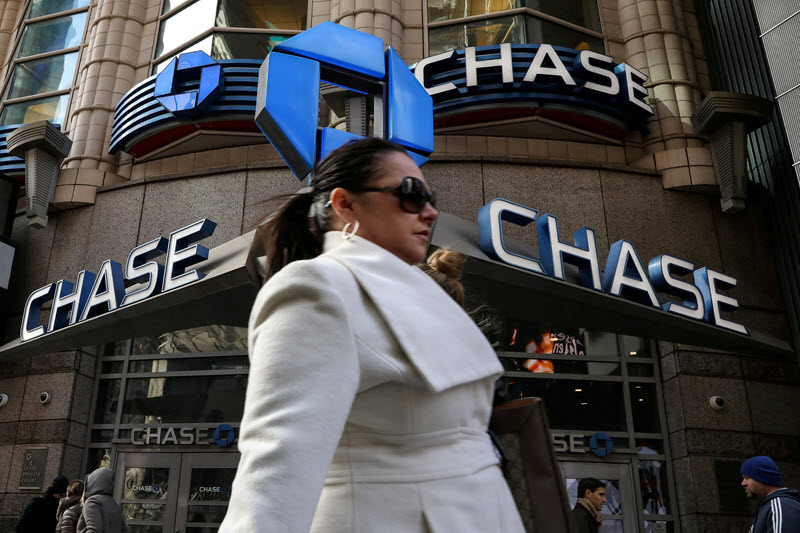This post was originally published on this site
https://i-invdn-com.investing.com/trkd-images/LYNXMPEI5R0VW_L.jpg
NEW YORK (Reuters) -A nearly $17 billion JP Morgan fund is expected to reset its options positions on Thursday, potentially adding to equity volatility at the end of a dismal first half for stocks.
Analysts say the JPMorgan (NYSE:JPM) Hedged Equity Fund’s reset roiled markets in the closing hours of the last quarter and has the potential to move markets again this time around.
Here is what you need to know:
WHAT IS THE JP MORGAN HEDGED EQUITY FUND?
The JPMorgan Hedged Equity Fund holds a basket of S&P 500 stocks along with options on the benchmark index and resets hedges once a quarter. The fund, which had about $16.71 billion in assets as of June 27, aims to let investors benefit from equity market gains while limiting their exposure to stock declines.
For the year, the fund was down 9.7% through June 29, compared with a 19.3% decline for the S&P 500 Total return Index.
Its assets have ballooned in recent years, as investors seek protection from the sort of wild swings that rocked markets in the wake of the COVID-19 outbreak in March 2020.
The fund’s positions include some of the market’s biggest names, such as shares of Apple Inc (NASDAQ:AAPL), Microsoft Corp (NASDAQ:MSFT) and Amazon.com Inc (NASDAQ:AMZN).
HOW DOES THE FUND USE OPTIONS?
The fund uses an options overlay strategy that involves buying put options that make money if the S&P 500 drops about 5% or more from its level at the start of each quarter. To limit the cost of these put purchases, the fund also sells puts that would make money if the S&P 500 drops more than 20%.
In addition, the fund sells call options struck about 3.5%-5.5% above the market level, to help fund the cost of the hedge.
In all, the trade is structured so that investors are protected if the market falls -5% to -20%, and they are able to take advantage of any market gains in the average range of 3.5-5.5%. In March, the refresh of these positions involved about 130,000 S&P 500 contracts in all, worth some $20 billion in notional terms.
HOW CAN THIS AFFECT THE BROADER MARKET?
Options dealers – typically big financial institutions who facilitate trading but seek to remain market-neutral – take the other side of the fund’s options trades.
To minimize their own risk, they typically buy or sell stock futures, depending on the direction of the market’s move. Such trading related to dealer hedging has the potential to influence the broader market, especially if done in size, as is the case for the JPM trade.
The S&P 500 Index fell 1.2% in the last hour of trading on March 31 amid a lack of any obvious news – a move some analysts pinned on options hedging flows.
Traders say the refresh could exacerbate market swings on Thursday, as the fund rolls over its options positions and dealers buy and sell futures to hedge their exposure.
Charlie McElligott, equities derivatives strategist at Nomura, believes that all else being equal, more volatility and stock weakness could follow after June 30, once the trade is out of the way.
The strategy’s puts corresponding to the 3,620 level on the S&P 500, the lower leg of the trade, may have lent support to the market during its slide this month, he said.

